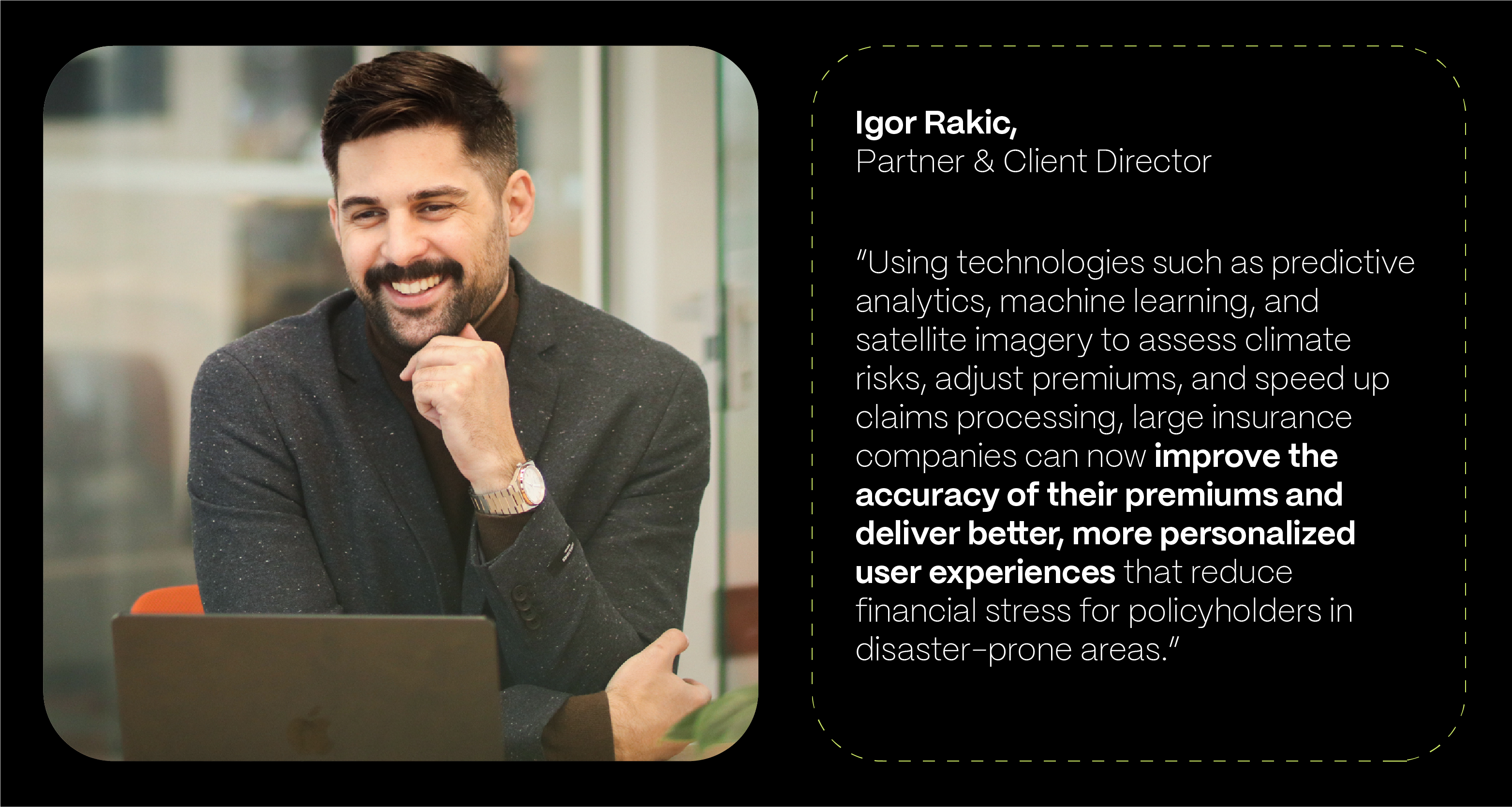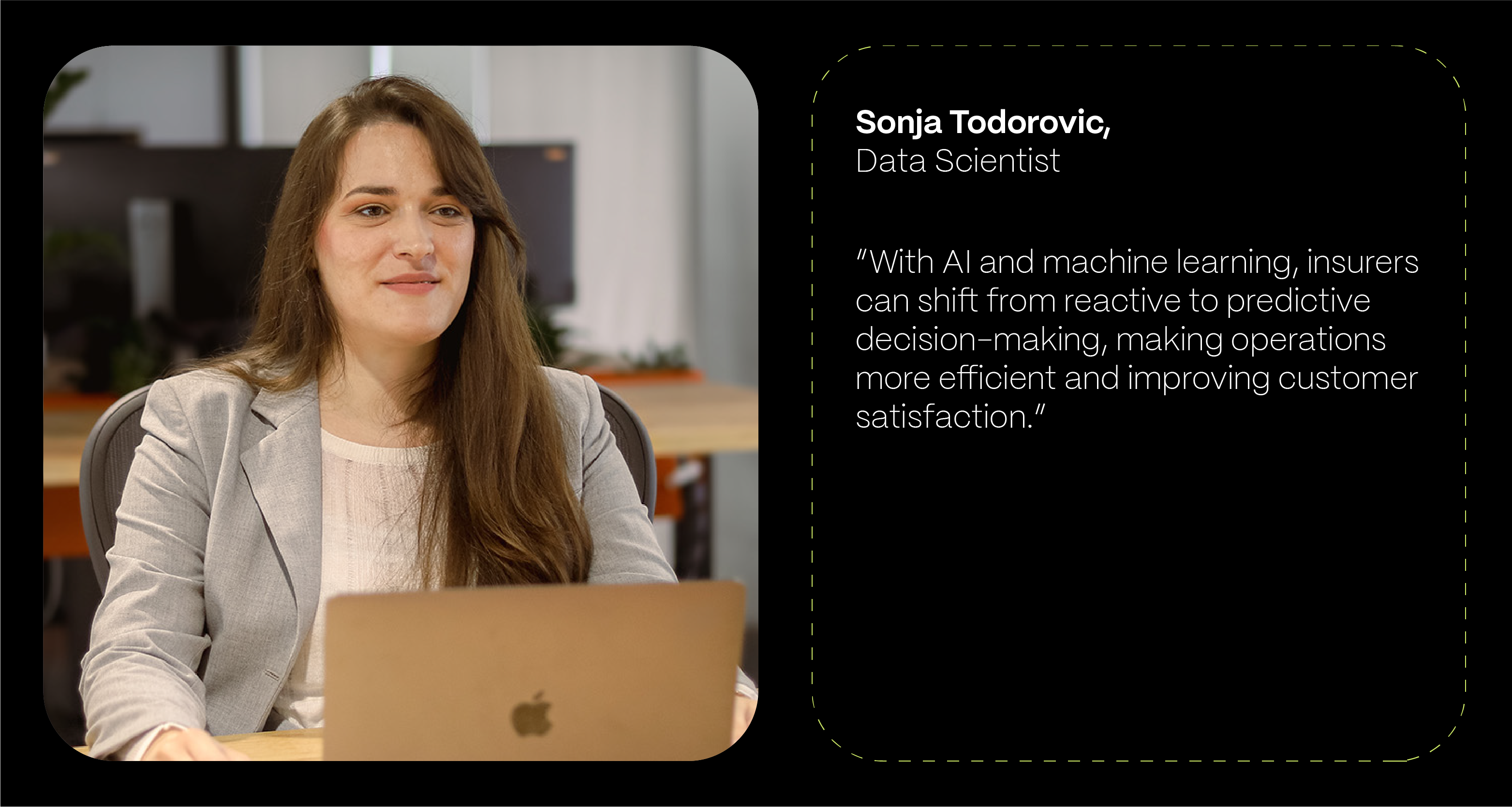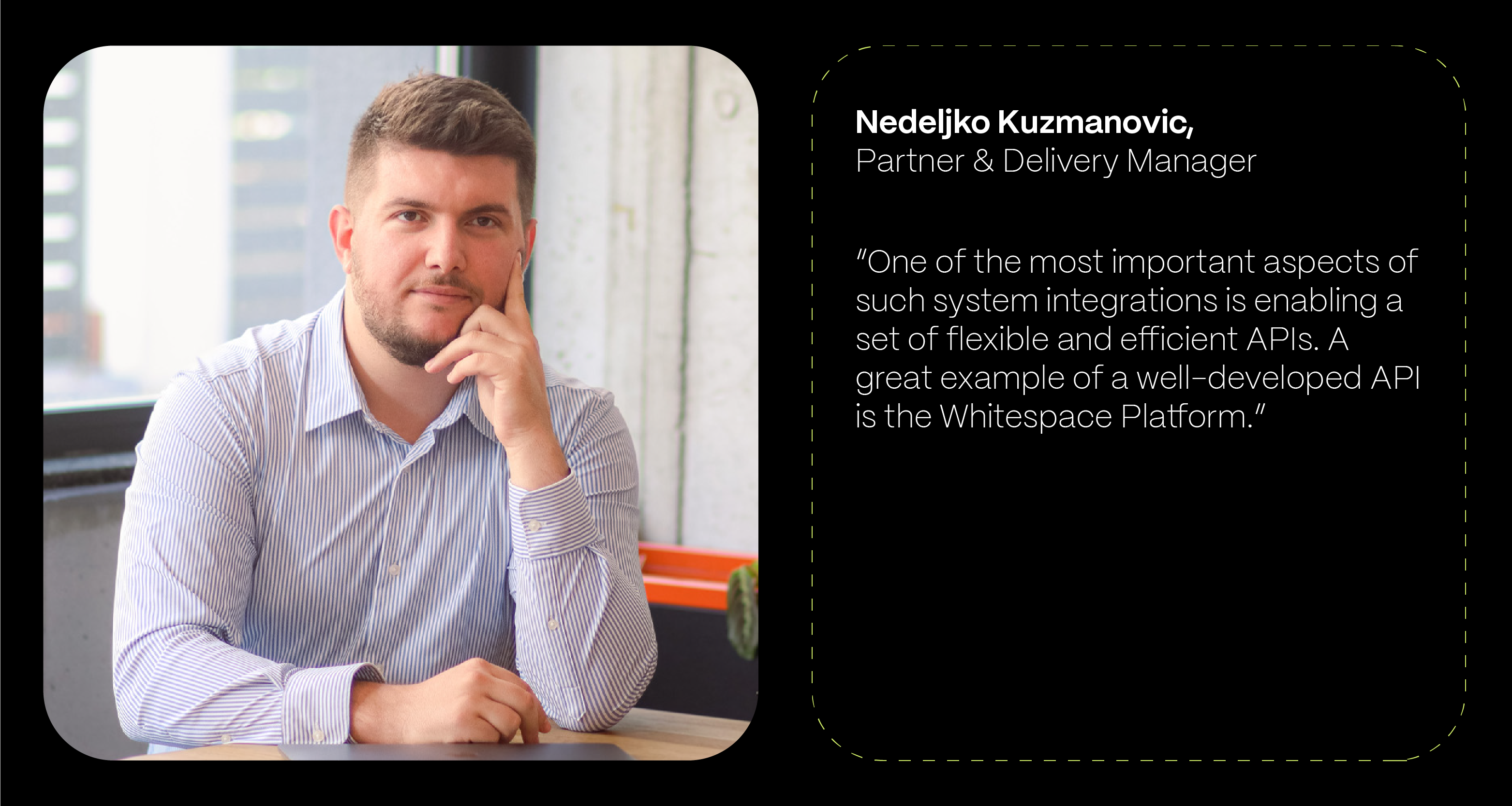The state of insurance in 2025: Customer experience as a new frontier

With global IT spending set to reach $362 billion in 2025, the insurance industry is undergoing a major shift toward cutting-edge technologies.
What does this mean for IT adoption in insurance, and what key steps should companies take to maintain a competitive edge?
To answer these questions, we talked to our insurance experts – Igor Rakic, Partner and Client Director; Nedeljko Kuzmanovic, Partner and Delivery Manager; and Sonja Todorovic, Data Scientist.
Their takeaway is clear – customer experience is definitely the driving force behind the digitalization of the insurance industry.
Why is it important to reshape the traditional approach to insurance?
Nedeljko: Insurance customers crave personalized experiences
Today’s consumers, accustomed to instant and seamless digital experiences, expect the same level of efficiency and personalization from the insurance sector. Historically seen as slow-moving and reliant on manual processes, insurance companies must now embrace digital transformation to maintain or create a competitive edge.
Moreover, the past decade has seen a surge of disruptive InsurTech startups offering innovative, digital-first solutions.
These newcomers have accelerated the need for traditional insurers to fast-track their own digital transformation efforts to keep pace with market expectations.
Igor: To stay competitive, insurance companies need to keep up with current events
Climate change is a perfect example of this. Due to the increased hurricanes, floods, and other natural disasters, the insurance industry has to leverage innovative technologies to help them effectively predict certain outcomes.
Using technologies such as predictive analytics, machine learning, and satellite imagery to assess climate risks, adjust premiums, and speed up claims processing, large insurance companies can now improve the accuracy of their premiums and deliver better, more personalized user experiences that reduce financial stress for policyholders in disaster-prone areas.
You say customer experience is key in insurance. So, how can companies make it better?
Igor: The shift to digital risk placement is crucial
One key development is the shift towards digital risk placement, allowing brokers to efficiently obtain quotes and coverage for their clients. These platforms typically handle everything from quote creation and communication with underwriters to signing lines and integration capabilities.
Brokers can not only benefit from the innovations but simply digitizing specific processes can also be of great benefit. There are a lot of solutions and companies developing solutions for digital risk placing, managing policies, creating MRCs, etc. All of this helps brokers be efficient and effective in their job and focus on what matters most - customers.
Nedeljko: Customer portals as game changers in insurance
In addition to what Igor mentioned, it is also important to mention customer portals as a perfect example of enhancing user experience in the insurance industry. These portals are essential for delivering a digital-first experience and are rapidly becoming the industry standard.
For insurers and brokers, these portals not only meet customer demands but also significantly reduce the operational burden associated with handling routine queries.
For example, one of our clients, a broker at Lloyd's, struggled with brokers being overwhelmed by customer requests for policy details, premium reports, and other information. Manually retrieving, analyzing, and formatting data from unstructured sources was time-consuming. The solution was implementing policy management software, allowing customers to access the information directly, ensuring full transparency without contacting brokers.
Customer portals benefit not only end-users but also collaboration between insurers and brokers. Currently, we're helping an insurer develop a mobile app for field brokers, providing real-time access to policies and quotes, enabling them to retrieve critical information anytime, anywhere.
What are the key technologies for insurance companies to adopt?
Nedeljko and Sonja: AI unlocks new possibilities for automation and personalization
Nedeljko: Unsurprisingly, I’d like to emphasize AI and say that it’s impact on the insurance sector is immense. Large Language Models (LLMs), for example, can significantly reduce the need for direct communication between clients and insurers by allowing chatbots to handle customer queries. These chatbots can also be integrated into internal platforms and portals to facilitate faster data retrieval, especially when dealing with unstructured data such as documents.
Sonja: Centralized and well-structured data repositories are just as important. They support advanced analytics and AI-powered solutions, helping insurers gain deeper insights, automate claims processing, personalize customer experiences, and improve risk assessment.
With AI and machine learning, insurers can shift from reactive to predictive decision-making, making operations more efficient and improving customer satisfaction.
Are there any challenges that prevent them from doing so?
Sonja and Nedeljko: Many insurance companies struggle with outdated legacy systems
Sonja: Outdated IT infrastructure can severely limit an insurance company's ability to deliver a seamless, high-quality customer experience. Many legacy systems operate in silos, lacking integration with modern digital tools.
This fragmentation can result in inconsistent data across platforms, delays in communication, and disjointed customer interactions. Policyholders may receive different information depending on the channel they use, leading to frustration and eroding trust.
Without a unified system, insurers struggle to provide real-time updates, personalized offerings, and efficient claims processing – key factors in meeting evolving customer expectations.
Nedeljko: That is why transitioning from legacy systems to modern, cloud-based, and scalable solutions with API integration capabilities is the foundation for any technological advancement in the insurance industry.
Once this infrastructure is in place, companies can further digitalize by leveraging Data Analytics, AI, and IoT. The API integration can enhance both internal connectivity and collaboration with external partners, such as insurtech firms.
However, developing in-house technical expertise for these complex systems is a significant challenge. Establishing technical partnerships with experienced IT companies specializing in the insurance domain is highly recommended, if not essential, to ensure these technologies' successful adoption and integration.
How can companies overcome these issues and improve efficiency?
Nedeljko: System integrations save time, improve efficiency, and automate operations
At the moment, seamless system integration is a top priority. It streamlines data flow through the organization, reduces the need for data re-keying, and provides better data consistency and reliability, speeding up business processes and lowering operational costs.
One of the most important aspects of such system integrations is enabling a set of flexible and efficient APIs. A great example of a well-developed API is the Whitespace Platform.
As their official integration partner, we recognized that the Whitespace API enables us to easily react to any changes and events on the platform and automate any kind of action that would usually be done manually by brokers or underwriters.
If you had to pick one trend as the biggest disruptor in 2025 and beyond, what would it be?
Nedeljko: It would definitely be embedded insurance
Today’s customers don’t want to deal with the hassle of traditional insurance processes. Some may even forgo coverage altogether to avoid the frustration.
So, they choose insurance companies that offer convenient, simplified user experiences. In such a competitive marketplace, the winners will be those that make buying insurance as easy as shopping online. No complex terms, no endless paperwork – just a fast, hassle-free process.
Thanks to modern embedded insurance solutions, that’s now a reality. In simple terms, embedded insurance integrates insurance directly into other products or services. Instead of purchasing insurance separately, customers receive coverage as part of their purchase, making the process seamless and more convenient.
Given that, it’s not surprising at all that by 2028, over 30% of insurance transactions are expected to happen through embedded channels.

How embedded insurance creates seamless experiences for consumers
The embedded insurance market deals with insurance policies integrated into other products or services. Instead of buying insurance separately, buyers can get it as a part of some other plan they decide to buy. Very convenient, simple, and most importantly – seamless for the customer.
Read moreTo conclude, what is required to adopt the latest technology trends in the insurance sector?
Igor: An innovation-driven mindset is key to digital transformation
To stay competitive, we must keep up with the latest insurance technology trends for 2025 and invest strategically in innovations that support our business objectives.
However, from our 16 years in the insurance sector, we’ve learned that adopting new technology isn’t enough.
True transformation requires a shift in mindset – leaders and management must rethink business models, embrace innovation, and prioritize customer-centric strategies. Only then can insurers fully leverage technology to enhance efficiency, resilience, and user experience.





